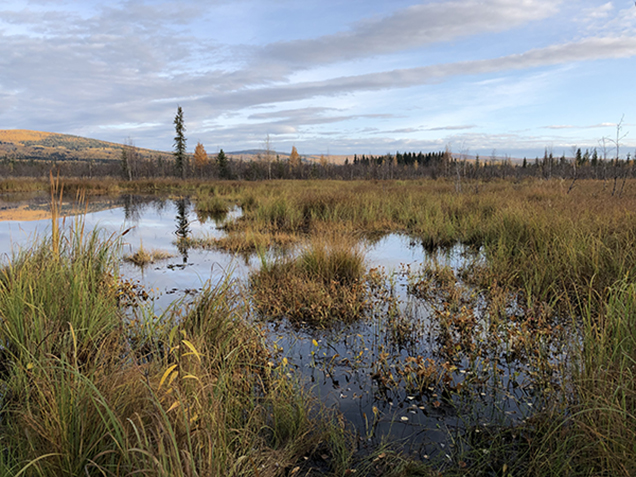With the world’s temperature rising, the Earth’s permafrost areas are particularly vulnerable
01-15-2021
Researchers at Purdue are working to realize the long-term effects of climate on permafrost.

Permafrost is defined as ground that has been frozen for at least two consecutive years. With the Earth’s temperature steadily rising, the impacts on permafrost have been unclear but also an area of concern for climate scientists. In last few decades, permafrost underneath boreal ecosystems has started to degrade due to climate warming. The degradation rate in response to the warming remains unclear.
“Thawing permafrost will change vegetation distribution and soil thermal and hydrological conditions, increasing greenhouse gas emissions of carbon dioxide, methane and nitrous oxide, which will further warm our planet,” says Dr. Qianlai Zhuang of the Department of Earth, Atmospheric, and Planetary Sciences at Purdue University.
Zhuang and Lei Liu, a joint PhD student between Purdue and the Chinese Academy of Sciences, have authored a publication in Environmental Research Letters on Dec. 24, 2020 that studies the permafrost in the Northern Hemisphere. The publication, named “Permafrost Sensitivity to Global Warming of 1.5 oC and 2 oC in the Northern Hemisphere,” quantifies what will happen to permafrost in various regions of the Northern Hemisphere under conditions that include both 1.5 oC and 2 oC temperature increases in the 21st century.
Two types of data have been used for this study. One involves forcing data to the model to project permafrost changes in the northern hemisphere in the 21st century. Another is the model evaluation data. The climate forcing data are scenario data of Representative Concentration Pathway (RCP), RCP 4.5 and RCP 8.5, which correspond to radiative forcing levels of 4.5 and 8.5 W/m2 by 2100, respectively.
Future climate data of air temperature, precipitation, and soil water content of these two RCPs scenarios are derived from the Inter-Sectoral Impact Model Intercomparison Project. Both model forcing and evaluation data have been published and obtained via community research websites. Specifically, observed active layer thickness data from CALM network sites were used to validate the model during 1986-2005.
“We found that warming of 1.5 ℃ and 2 ℃ would drastically increase permafrost degradation area,” says Liu. “The degradation rate of permafrost area due to warming is estimated at more than 1.4 million km2 per 1oC increase. Permafrost under a warmer climate scenario tends to be more sensitive to the warming. Permafrost in the south of the Northern Hemisphere is most vulnerable to climate warming. Our study highlights that permafrost in the region will respond differently under different warming scenarios across space (e.g., north vs. south) and time (e.g., summer vs. winter) in this century.”
Permafrost contains large amounts of organic matter that can be decomposed to release greenhouse gases upon thaw. Slowing down the thawing will reduce greenhouse gas emissions, and offset the anthropogenic emissions, which will help reversing the course of the climate change.
“Our findings on the permafrost degradation rate and spatially different responses to warming provide invaluable information to slow down the degradation in the region,” says Zhuang. “The alleviation of permafrost degradation shall slow down the positive feedback loop between thawing permafrost and warming.”
Zhuang’s lab will continue to study the effects of global climate change on permafrost. Future studies involve analysis of the consequences of permafrost degradation for carbon and nitrogen cycles, especially on greenhouse gas emissions of CO2, CH4 and N2O. His team is continuously modeling permafrost dynamics and their impacts on vegetation, hydrology and carbon cycling in the Arctic. His lab uses an interdisciplinary approach to collecting and evaluating the data.
“My lab at Purdue focuses on researching the interactions among the atmosphere, biosphere, and human dimension in the context of climate change, chemical element cycles, and policy-making,” says Zhuang. “To study these interactions, a system approach that integrates the basic principles of biology, physics, and chemistry is used; the knowledge derived from field and laboratory experiments is integrated with the state-of-the-art ecosystems and biogeochemistry models and atmospheric climate and chemistry models; the data of biosphere and atmosphere obtained from field and in-situ measurements and satellite observations are fused with the numerical models.”
Writer: Cheryl Pierce